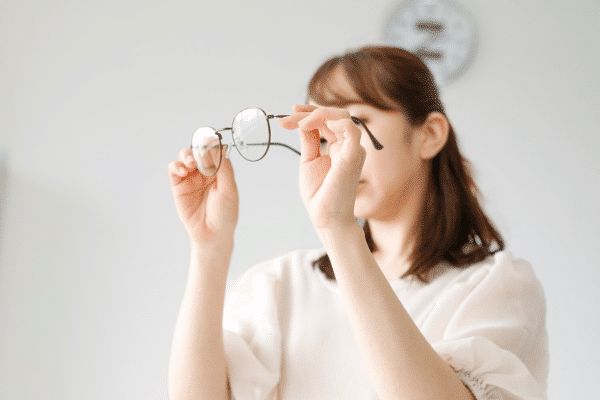In their daily work, ophthalmologists very often diagnose large visual defects. Depending on the severity, different methods are used to correct them. The most popular are eyeglasses or contact lenses, but in recent years surgical and laser treatments have also been successful. What exactly is meant by a large visual defect and what are the treatment options?
A large visual defect - or what kind of defect?
When visiting an ophthalmologist, examinees often ask what it means that their defect is large or what is the largest visual defect. Well, it all depends on its type.
In the case of myopia, when the patient can see well up close, but distant objects are blurry to him, the scale is as follows:
- low myopia - less than -3 diopters,
- Medium myopia - from -4 to -6 diopters and should not exceed -8 diopters,
- High myopia - from -8 diopters.
A large defect in this case is the third degree of the scale, while the largest visual defect in diopters reaches up to several tens on the negative side.
In hyperopia, when the patient sees objects far away well and those close by less well, the scale is as follows:
- low hyperopia - does not exceed +2 diopters,
- Moderate hyperopia - from +2 to +5 diopters,
- severe hyperopia - when the value exceeds +5 diopters.
The last step of the scale is considered a major visual defect here.
In the case of astigmatism, the patient, due to distortion of the cornea or lens, can see blurry both up close and far away. The scale of the defect is as follows:
Low astigmatism - up to 1 diopter,
Medium astigmatism - from 1 to 2 diopters,
High astigmatism - from 2 to 3 diopters,
Astigmatism very high - more than 3 diopters.
The defect often occurs simultaneously with myopia and hyperopia, so the scale can have a wide range.
Correction of large visual defects - glasses and lenses
Patients with myopia can benefit from glasses if their defect is of low or medium degree and the difference in the size of the defect of the two eyes is no more than 2-3 diopters. In the case of large visual defe cts and glasses with a power of more than -10 diopters, the observed image is so much reduced that it is difficult to see. It is also difficult to compensate for a high degree of astigmatism - more than 3 diopters - with eyeglasses.
Contact lenses, on the other hand, don't diminish the image as much, so they can correct high defects and varifocality. When it comes to astigmatism, it is necessary to use special toric lenses.
With hyperopia , patients may also be offered glasses - this time "plus glasses." However, as with short-sighted people - the greater the visual defect, the more the glasses narrow the field of vision. In severe farsightedness (above +5 diopters), contact lenses that do not interfere with vision are therefore better.
Treatments used in the treatment of large visual defects
Surgical and laser treatments are also successfully used to treat large vision defects. One of them is the implantation of a phakic lens, an intraocular corrective lens.
The method addresses patients with myopia up to -20 diopters, hyperopia up to +10 diopters and astigmatism up to 6 diopters. The procedure takes several minutes and is performed under local anesthesia. Candidates for surgical correction should be at least 21 years old, and their visual defect must have been stable for at least the past year.
Laser vision correction procedures, during which a specialized device acts on the cornea, shaping its shape as needed, are also becoming increasingly popular and effective. Patients often ask whether laser vision correction is effective for large defects.
Can large vision defects be corrected with lasers?
Well, in the case of myopia, defects of up to -12 diopters can be corrected with modern equipment. In practice, an experienced refractive surgeon can often handle much larger negative vision defects. For farsightedness, the latest methods allow the correction of defects up to +6 diopters, sometimes more. In astigmatism, with advanced technology, the defect can be corrected to approx. 5 diopters.
Laser treatments are carried out under local anesthesia and take several minutes. To undergo laser correction, one must be between 18 and 21 years old and, as with lens implantation, the defect must have been stable for the past 12 months.
The advantages of laser vision correction are primarily the recovery of normal visual acuity - by eliminating the cause of the problem. Also important is the lack of need to wear glasses and contact lenses and the short recovery time, so the patient can return to full activity almost immediately.
Keep in mind that if you want to be guaranteed a confident diagnosis, the selection of the right device and a satisfactory result of the treatment, you should choose an experienced specialist.
Patients looking for a trusted facility in Krakow can successfully use the offer of Piotr Voigt's clinic.Voigt Eye Clinic is a place that enjoys many recommendations, among others. thanks to the use of innovative methods in vision correction, even with large defects.

